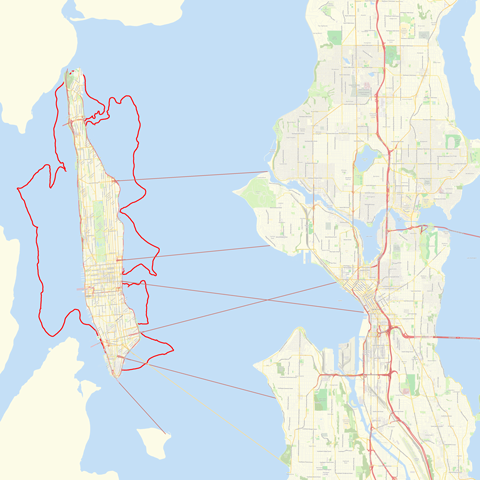I just finished Ryan Boudinot's Blueprints of the Afterlife. It's one of the most original and convoluted stories I've read in recent years; like David Mitchell meets William Gibson.
There are some beautiful sentences lurking in this story:
Like a rivulet of suffering feeding into the tributary, this new source of sad humanity bled from the TV...
and:
The end was a slow but accumulating tabulation of lost things. We lost species of animals, polar ice, a building here and there, whole cities. There was a time when we lived on streets where we knew our neighbor's names but now we were all strangers isolated in our condos late at night, speaking across distances to our lonely, electronic communities.
The book also features the most interesting architectural reinterpretation of the future I've read in recent years. Here's how Victoria, BC looks a few hundred years from now:
The city of Victoria appeared to have regressed in age, its green-built skyscrapers brought to heel, malls and parking garages and condominiums razed, all replaced by roiling wilds. What remained standing were the buildings worthy of the city's heritage-the Parliament, some Tudor-style B&B's, a replica of Shakespeare's house. This was a city that had once aspired to London's botanical gardens and double-decker buses but had negotiated with the tribal culture that preceded it, arriving at an aesthetic truce, a fusion of potlatch and high tea. Here and there totem poles and longhouse materialized from the Emily Carr mists rolling off the harbour, monuments of extinction far more distant than the end times of recent memory.
Abby disembarked, suitcase in one hand, a duffel containing her tools in the other. Up ahead was the Empress Hotel, a stately, ivy-clad structure that smugly lorded over the geography as is glaciers had sculpted the harbour for its benefit alone. It used to be a hotel anyway. In recent centuries it had survived fires, vandalism, drug-addicted architects who'd added wings and bunkers. A scorched tower stood proudly unbowed. Abby ascended to the lobby entrance, skipping every other step.
But the most interesting idea in the book is New York Alki.
The book is set in the Pacific Northwest, primarily around Seattle. Now it turns out that Seattle was originally called "New York Alki". Alki was a local native work for "by and by" and several of the original settlers were from New York. One day, by and by, Seattle would be New York.
It hasn't exactly worked out that way, but Blueprints shows how it could.
Because it turns out that Bainbridge Island - just across Puget Sound from Seattle - is roughly the size of Manhattan (Manhattan is 13 miles long; Bainbridge clocks in at 10 miles). In Blueprints, Manhattan is literally recreated on Bainbridge Island, which is terraformed into the shape of it's eastern neighbor.
I couldn't help but wonder what this would look like, so I thought I'd create a map showing it. Here it is using Open Street Maps and Tilemill:
 ]({static}/images/2013/06/new-york-alki-small.png)
]({static}/images/2013/06/new-york-alki-small.png)